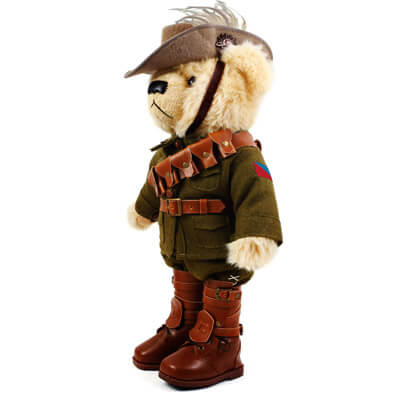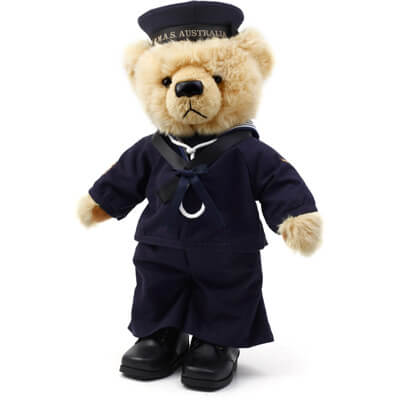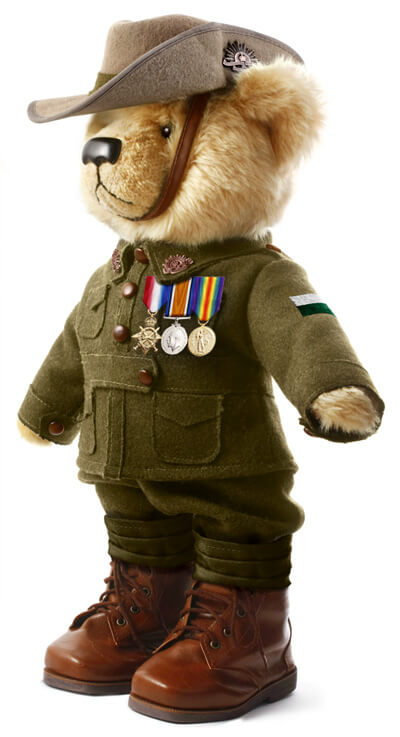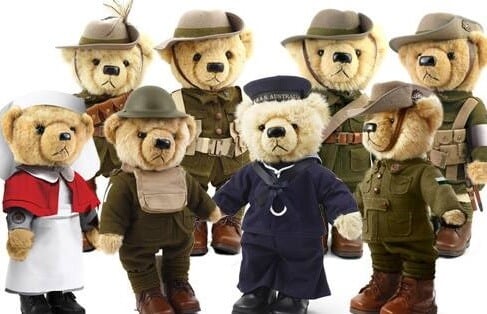
THE LIGHT HORSE BEAR
The distinctive emu plume worn by Trooper Jones is a proud symbol of the Australian Light Horse and Australia’s military heritage.
While the plume was not worn by all Light Horse Regiments it is synonymous with the dashing troopers who served in the Great War in the Mediterranean and Egyptian Expeditionary Forces, fighting the Ottoman Empire at Gallipoli and in Sinai, Palestine and Syria. Two units also served on the Western Front.
The light horse was not a conventional cavalry, rather they were mounted infantry who would dismount and fight on foot. Formed in sections of four riders, one man would take the section's horses to safety before joining the other men in the fight. Their favoured mount was the Australian Waler, a horse specifically bred for Australia’s harsh bush. Men and mounts of the light horse were aboard the first convoy of Australian Imperial Force troopships to sail for war. In all 15 regiments of light horse were raised for service overseas during the Great War.
Caring Hands Light Horse Figurine
The folklore that surrounds the exploits and manner of the light horsemen affords the light horse a special place in the hearts of Australians. The uniform as depicted on Trooper Jones differed from that of the common diggers’ khaki. The light horsemen wore polished leather leggings, a shoulder slung bandolier and riding breeches.
The famous ‘emu plume’ atop of his slouch hat was cause for some controversy in the early days of the Great War. The Australian Government deemed all ALH could wear the plume but many regiments argued that this ‘privilege’ belonged only to the mounted troopers of Queensland, where the Gympie Mounted Infantry first adorned their hats in 1891 on service during the Great Shearers’ Strike. Some regiments opted not to wear the plume, yet today it is widely recognised as the symbol of this legendary fighting force. Trooper Jones wears the colour patch of the 5 LH Regiment, which was raised in Queensland in September 1914 and fought at Gallipoli and then with the ANZAC Mounted Division in the Middle East.
The Charge at Beersheba Light Horse Miniature Figurine
A great sadness for many light horsemen at the end of the Great War was leaving their faithful mounts behind. The Australian Government deemed the risk of disease and cost of transport too great and instead sold the horses into service with the British and Indian Armies. Those horses too old; injured or too ill; were humanely put down.

















